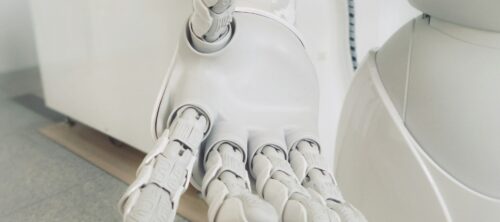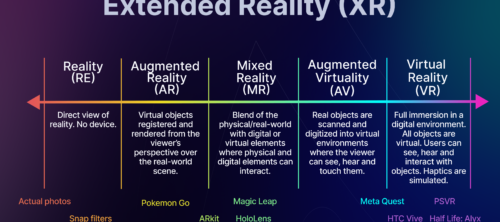
Mastering AI Retopology for 3D Modeling
In recent years, the world of 3D modeling has witnessed a significant shift with the introduction of AI-powered tools and solutions. One area where AI is making substantial inroads is in the retopology process, a crucial but often time-consuming step in 3D modeling. This article explores the landscape of AI-powered retopology tools, their impact on the industry, and what 3D modeling enthusiasts and professionals need to know about this emerging technology.
Understanding Retopology
Before diving into AI-powered solutions, it’s essential to understand what retopology is and why it’s important. Retopology is the process of creating a new, optimized mesh topology for a 3D model. This step is crucial for:
- Improving model performance in real-time applications
- Enhancing animation quality
- Preparing models for texturing and UV mapping
- Reducing file size and rendering times
Traditionally, retopology has been a manual and time-intensive process, requiring skilled artists to carefully reconstruct the mesh of a high-resolution model. This process involves creating a new, lower-polygon version of the model that maintains the original shape and details while improving its overall structure and efficiency.
The importance of retopology cannot be overstated in the 3D modeling workflow. A well-retopologized model not only performs better in various applications but also allows for smoother animations, easier texturing, and more efficient rendering. For example, in game development, optimized models are crucial for maintaining high frame rates and smooth gameplay, especially on devices with limited processing power.
The Promise of AI Retopology
AI-powered retopology tools aim to automate this process, potentially saving artists significant time and effort. These tools use machine learning algorithms to analyze the geometry of a high-resolution model and generate an optimized, low-poly version while preserving the original shape and details.
The potential of AI in retopology extends beyond mere time-saving. These tools have the capacity to learn from vast datasets of professionally retopologized models, potentially identifying optimal topology patterns for different types of objects and characters. This could lead to more consistent and efficient retopology results across various projects and teams.
Moreover, AI retopology tools could potentially adapt to different requirements for various platforms and applications. For instance, they could generate different levels of detail (LODs) automatically, optimizing models for use in mobile games, high-end PC games, or film visual effects, all from a single high-resolution source.
Current Landscape of AI Retopology Tools
While the concept of AI retopology is exciting, it’s important to note that the technology is still in its early stages. Many 3D artists have expressed dissatisfaction with existing AI modeling tools, citing issues with poor topology and UV mapping. However, there is a growing demand for dedicated AI retopology tools that can refine these aspects more effectively.
Some notable developments in this space include:
- Project Bernini by Autodesk: While not specifically focused on retopology, this project aims to generate functional 3D shapes using AI and could potentially evolve to include retopology features as datasets improve. Project Bernini represents a significant step towards AI-assisted 3D modeling, showcasing the potential for AI to understand and generate complex 3D geometries.
- Retopokill: An alpha test AI-powered retopology tool that has garnered attention in the Blender and CG community. While still in its early stages, Retopokill demonstrates the growing interest in specialized AI tools for retopology. Its development is being closely watched by professionals in the field, as it could potentially offer a glimpse into the future of AI-assisted 3D modeling workflows.
- ZBrush’s ZRemesher: While not fully AI-powered, this tool uses advanced algorithms to automate retopology and has been a stepping stone towards more intelligent retopology solutions. ZRemesher has been widely adopted in the industry and has set a benchmark for automated retopology tools. Its success has paved the way for more advanced, AI-driven solutions in the future.
As the field progresses, we can expect to see more sophisticated AI retopology tools emerging. These may include plugins for popular 3D modeling software or standalone applications that can seamlessly integrate into existing workflows. The key challenge for developers will be creating tools that not only automate the process but also provide artists with the necessary control and flexibility to achieve their desired results.
Benefits and Challenges of AI Retopology
Potential Benefits:
- Time-saving: Automating the retopology process could significantly reduce the time spent on this task. This could allow artists to focus more on creative aspects of their work, potentially leading to higher-quality outputs and faster project completion times.
- Consistency: AI tools could provide more consistent results across different models. This consistency could be particularly valuable for large projects or teams, ensuring that all models meet the same quality standards regardless of the individual artist’s skill level or experience with retopology.
- Accessibility: These tools could make advanced 3D modeling techniques more accessible to beginners. By automating complex processes, AI retopology tools could lower the barrier to entry for 3D modeling, potentially fostering innovation and creativity in the field.
- Scalability: AI retopology could enable artists to work with increasingly complex models and scenes without a proportional increase in workload. This scalability could be particularly beneficial for projects in virtual reality, augmented reality, and large-scale simulations.
Current Challenges:
- Quality concerns: Many AI-generated models still require manual touch-ups to achieve professional-grade results. The complexity of 3D geometry means that AI tools may struggle with certain types of models or specific artistic styles, necessitating human intervention.
- Loss of artistic control: Some artists worry that over-reliance on AI tools might lead to a loss of nuanced understanding and artistic judgment. There’s a concern that as processes become more automated, artists might lose touch with the fundamental principles of good topology.
- Limited adaptability: Current AI tools may struggle with complex or unconventional geometries. While they might perform well on common objects or characters, they may falter when faced with unique or highly stylized models.
- Integration with existing workflows: Incorporating AI retopology tools into established pipelines can be challenging. Issues of compatibility, learning curves, and resistance to change can all pose obstacles to adoption.
Community Perspectives
The 3D modeling community has mixed feelings about AI-powered tools. While many are excited about the potential time-savings and efficiency gains, others are skeptical about the quality of AI-generated results and concerned about the impact on traditional skills.
A discussion on Reddit highlights some of these concerns, with many professionals emphasizing the importance of understanding fundamental 3D modeling principles, regardless of the tools used. Some artists argue that AI tools should be seen as assistants rather than replacements, helping to streamline workflows while still relying on human creativity and judgment for final decisions.
On the other hand, proponents of AI retopology tools point out that automating tedious tasks could free up artists to focus on more creative aspects of their work. They argue that embracing these tools could lead to more efficient production pipelines and potentially open up new possibilities in 3D design.
Educational Impact
As AI tools become more prevalent, educational institutions are starting to incorporate discussions about these technologies into their curricula. Courses on 3D character modeling are increasingly addressing AI technologies, including retopology, to prepare students for a changing industry landscape.
This shift in education reflects the growing importance of AI in the 3D modeling field. Students are now being taught not only traditional modeling techniques but also how to effectively leverage AI tools in their workflows. This dual approach aims to produce graduates who are well-versed in fundamental principles while also being adaptable to emerging technologies.
Some institutions are even developing specialized courses focused on AI in 3D modeling, exploring topics such as machine learning for geometry processing, AI-assisted texturing, and, of course, automated retopology. These courses often combine theoretical knowledge with practical applications, giving students hands-on experience with cutting-edge tools and techniques.
Future Outlook
While current implementations of AI retopology often fall short of user expectations, industry experts predict that specialized AI tools for retopology will continue to improve. As datasets expand and algorithms become more sophisticated, we can expect to see more effective and user-friendly AI retopology solutions in the future.
The future of AI retopology might include:
- More intelligent algorithms: Future AI tools may be able to understand the intended use of a model (e.g., for animation, 3D printing, or real-time rendering) and optimize the topology accordingly.
- Integration with other AI tools: We might see AI retopology tools that work seamlessly with AI-powered modeling, texturing, and rigging tools, creating a more comprehensive AI-assisted 3D production pipeline.
- Customizable AI: Artists may be able to train AI tools on their own style or specific project requirements, resulting in more personalized and adaptable retopology solutions.
- Real-time retopology: As processing power increases, we might see AI tools capable of performing high-quality retopology in real-time, potentially revolutionizing workflows in areas like game development and virtual production.
Conclusion
AI-powered retopology tools represent an exciting development in the world of 3D modeling. While they are not yet a complete replacement for manual skills, they offer the potential to streamline workflows and make complex tasks more accessible. As with any new technology, it’s important for 3D modeling professionals to stay informed about these developments and critically evaluate how they can be integrated into existing workflows.
For those interested in exploring AI retopology, it’s recommended to experiment with available tools while maintaining a strong foundation in traditional 3D modeling techniques. By combining the efficiency of AI with the nuanced understanding of experienced artists, the future of 3D modeling looks both innovative and creatively rich.
To learn more about the broader context of AI in 3D modeling, check out our article on creating 3D models using various methods, including AI and manual approaches. This comprehensive guide provides insights into different modeling techniques and how AI is shaping the future of 3D design.
For those looking to integrate AI-generated models into their workflow, our guide on how to add 3D models to Blender using Alpha3D provides valuable insights. This step-by-step tutorial will help you seamlessly incorporate AI-generated assets into your Blender projects, enhancing your productivity and creative possibilities.
As the field of AI retopology continues to evolve, staying informed and adaptable will be key for 3D modeling professionals. By embracing these new tools while maintaining a strong foundation in traditional techniques, artists can position themselves at the forefront of this exciting technological revolution in 3D modeling.






